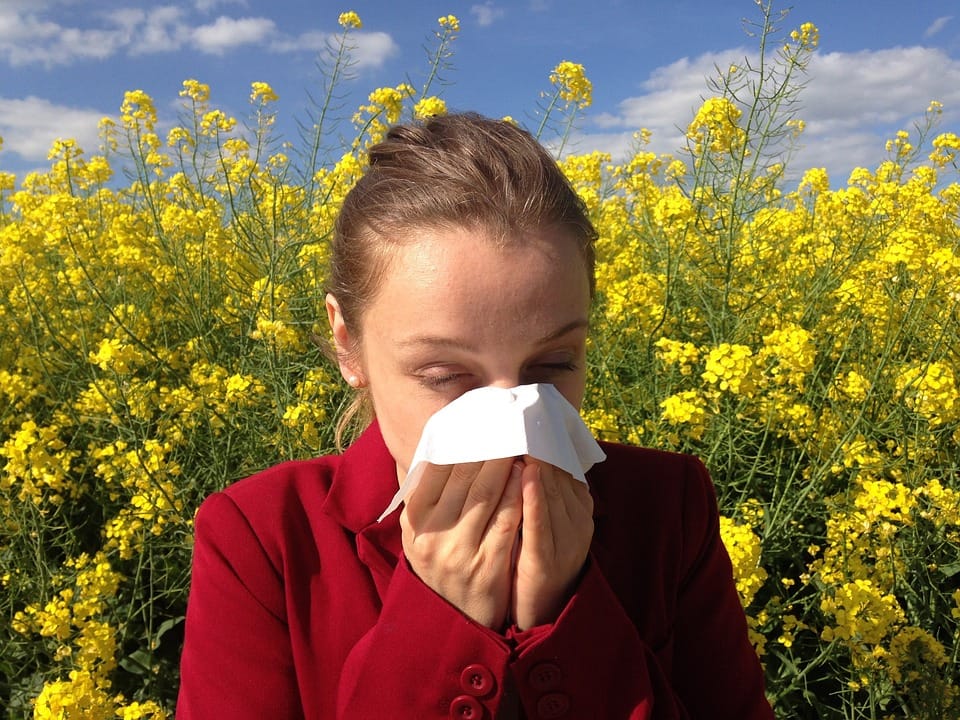At least every tenth person on the planet encounters various manifestations of allergies in their lives. At the same time, many myths and misconceptions constantly arise in connection with the disease. We decided to check the most common of them.
By statistics, In Russia, the incidence is higher than the world average: up to 30% of adults and almost 50% of children are allergic to something. Most often allergies manifests itself in the form of rhinitis (runny nose and nasal congestion), conjunctivitis, bronchial asthma and atopic dermatitis. There are also acute allergic reactions - these include urticaria and angioedema, and the most severe form of allergy is considered anaphylactic shock. Most often allergies provoke various foods, dust, medications, pollen and contact with other organisms (cats, dogs, wasps, bees, etc.).
Is it true that allergies cannot be cured?
Distributed opinionthat allergies are disease for life cure its impossible. The only thing the patient can do is avoid source of allergies and take special ones during attacks drugs - antihistamines.
Allergies are inappropriate, unwanted and unexpected reaction immune system in response to an external irritant that normally does not lead to disease and is not capable of harming a person. The immune system recognizes a harmless substance as an aggressor and begins to fight it, producing antibodies or immunoglobulins type E (we have already written more about antibodies previously). Immunoglobulins, in turn, activate mast cells - mast cells - and basophils, and they instruct the body to release histamine, cytokines and some other substances. Antihistamines, as the name suggests, don't decide the problem of a pathological immune response, but only block the excessive production of histamine, thereby reducing the external manifestations of allergies and discomfort for the patient.
There is another approach to treatment - allergen-specific immunotherapy (ASIT), aimed at “training” the body to adequately perceive the allergen. ASIT assumes that the body will come into contact with the allergen at strictly controlled intervals and in a certain dose. Therefore, such therapy can be compared to hardening - by regularly dousing yourself with increasingly cold water, you can increase the body’s comfortable temperature range. According to the latest data, ASIT does not provide a complete cure, but can put the patient into long-term remission (more than 12 years in one research and more than 16 in friend) without any allergy symptoms.
However, some types of allergies (mostly food) can be outgrown. By data Mayo Clinic (USA), from 60% to 80% of children who had an allergy to eggs and milk outgrow it by the age of 16. With age, allergic manifestations in general weaken: sensitivity to house dust and mites, as well as to cats, is most significantly reduced, to a lesser extent this applies to pollen allergies. Australian Society of Allergy and Immunology notesthat 85% of children with atopic dermatitis recover by adolescence, but have problems with their skin and the selection of cosmetics throughout their lives.
There is some encouraging news. Scientists developed a vaccine against birch pollen allergy, which will also be able to prevent unwanted reactions to nuts and apples, and in the summer of 2022 planned begin clinical trials of a vaccine against cat allergies. But today, most allergies are still considered incurable diseases. Existing drugs can only put the patient into long-term remission, but not completely rid him of the disease.

Mostly true
Is it true that poplar fluff is one of the strongest allergens?
You can find on the Internet tens stories userswho complain that they suffer from an allergy to poplar fluff, and Also adviсe doctorslike with her fight.
In fact, poplar is not one of the most common allergens. Poplar pollen extremely rare causes an allergic reaction, and poplar fluff by itself is not at all capable of causing it. However, allergy symptoms do not just coincide in time with the fluff flying from the trees. Firstly, fluff irritates the mucous membranes mechanically (the immune system in this case does not participate in the reaction at all), and secondly, due to its structure, fluff accumulates and carries other allergens, such as grass pollen, which causes an allergic response.

Not true
Is it true that allergies indicate low immunity?
Distributed opinionthat allergies are indicator low immunity, and, raising it with a variety of means, Can get rid of and allergy symptoms.
Allergies are indeed associated with disturbances in the functioning of the immune system, as we discussed above. However, the mechanism of development of an allergic reaction testifies about a malfunction in the immune system answer, but not about weak immunity in principle. Allergies occur when the immune system is hypersensitive and reacts to things it normally should not react to. No methods of boosting immunity are included in the list of therapeutic measures for allergies not included. Moreover, the very idea that the immune system needs to be strengthened, in most versions of the presentation represents another medical myth.

Not true

Is it true that allergies are always a contraindication for vaccination?
Exists fearthat the presence of allergies is always a lifelong medical disqualification from any vaccinations. We are sure of this and parents children who are eligible for vaccinations according to the national schedule of preventive vaccinations, and adultswho are afraid to get vaccinated against the new coronavirus infection.
Contraindications to vaccination can be temporary or permanent. To temporary, indeed, include exacerbation of chronic diseases, including allergies. Moreover, the decision in each case is made not by the patient himself, but by his attending physician. Most often doctors advise wait out the allergy season if we are talking about seasonal allergies, or minimize contact with the allergen before and after the vaccine if the patient has another form of allergic reactions. Regarding vaccination against coronavirus infection, the instructions for Sputnik V registered, that the list of contraindications includes “a history of severe allergic reactions.” However, the drug developers stipulatethat seasonal and food allergies do not apply to such reactions.
Practicing doctors also agree with the developers. “Food allergies (to strawberries, oranges, honey, etc.), as well as allergies to pollen or dust are not a reason to refuse vaccination” - asserts allergist Vladimir Bolibok. The position of Russian specialists is shared by Western scientists. Recommendations The American College of Allergy, Asthma and Immunology lists only allergies to vaccine components as an absolute contraindication; in other cases, consultation with an allergist is required to make a decision. Coincides with position European Academy of Allergology and Clinical Immunology.
Allergy to chicken protein also doesn't count an absolute contraindication to vaccination in general - patients with this diagnosis should only avoid drugs made on its basis.

Not true
Is it true that allergies are a consequence of living in poor environmental conditions?
Supporters this hypothesis is reversed attention that earlier allergies were less common, and conclude that the disease is associated with poor environmental conditions. According to survey VTsIOM, 60% of Russians believe in this connection.
In fact, there is no such cause-and-effect relationship between allergies and the ecology of large cities. Scientists have conducted many studies. Was noticedthat people living in nature in close contact with animals are less susceptible to allergic reactions than city dwellers. Allergist Olga Zhogoleva explains it’s like this: “We have less and less contact with microbes, animals, plants. As a result, the immune system has nothing to train on.” Indeed, those living in houses where they are cleaned with antibacterial agents more inclined to the development of asthma, while children growing up on a farm or surrounded by pets more stable to the development of allergies. Even in a less urbanized country like Ghana, urban children more susceptible allergies than their rural peers. Erika von Mutius, pediatric allergist at the University of Munich, explains it’s like this: “Exposure to germs at an early age helps the child’s immune system develop properly. Without such training, the immune system is more likely to attack the wrong targets, which becomes a prerequisite for the development of allergic and autoimmune diseases.” Thus, it is not the increased level of pollution that becomes the trigger, but, on the contrary, an overly sterile living environment prevents the immune system from learning to distinguish dangerous pathogens from harmless ones and triggers allergic reactions.

Not true
Is it true that there are hypoallergenic breeds of dogs and cats?
You can find it on the Internet informationthat Greyhounds, Bichon Frize, Shih Tzu, Yorkshire Terriers, Poodles, Samoyeds, Jack Russell, English and French bulldogs, as well as some other breeds are considered hypoallergenic dogs. Among cats, the least discomfort for an allergy sufferer is considered to be sphinxes, rexes, orientals, Siamese, Siberian, Burmese, and those at the peak of popularity lykoi and elves. It is worth noting that among both dogs and cats there are listed breeds with no hair at all, as well as short-haired and even long-haired.
Cat allergies in the world suffers about 10% of the adult population and up to 14% of children. Hypersensitivity to dogs widespread about half as much. According to shelters, up to 80% of animals come to them because someone in the house has an allergy. Cat allergens Fel d 1 and Fel d 4, contrary to popular belief, contained not in animal hair, but in the secretions of the sebaceous and salivary glands. By licking, the cat transfers allergen proteins to the skin or fur. And since these molecules are extremely small, they can easily reach human bronchi and alveoli, where they provoke severe allergic reactions. Interestingly, scientists still don't knowWhat function do these proteins perform in the body of cats? Moreover, it has been noted that the amount of allergen produced varies depending on the age of the animal, time of year, coat color, castration or sterilization performed or not, and some other factors. Allergies to dogs occur in a similar way.
AND Russian, And foreign Experts unanimously say that hypoallergenic breeds are just a marketing ploy. Unfortunately, ASIT against cats and dogs in Russia is still not registered. We can only hope for other scientific developments: the already mentioned clinical trials of a vaccine for humans and medicinal food for cats, reducing allergen production, as well as Swiss development a vaccine for the animals themselves, which triggers the production of antibodies against Fel d 1 in the cat’s body, which block and neutralize this protein.

Not true
Read on the topic:
If you find a spelling or grammatical error, please let us know by highlighting the error text and clicking Ctrl+Enter.






